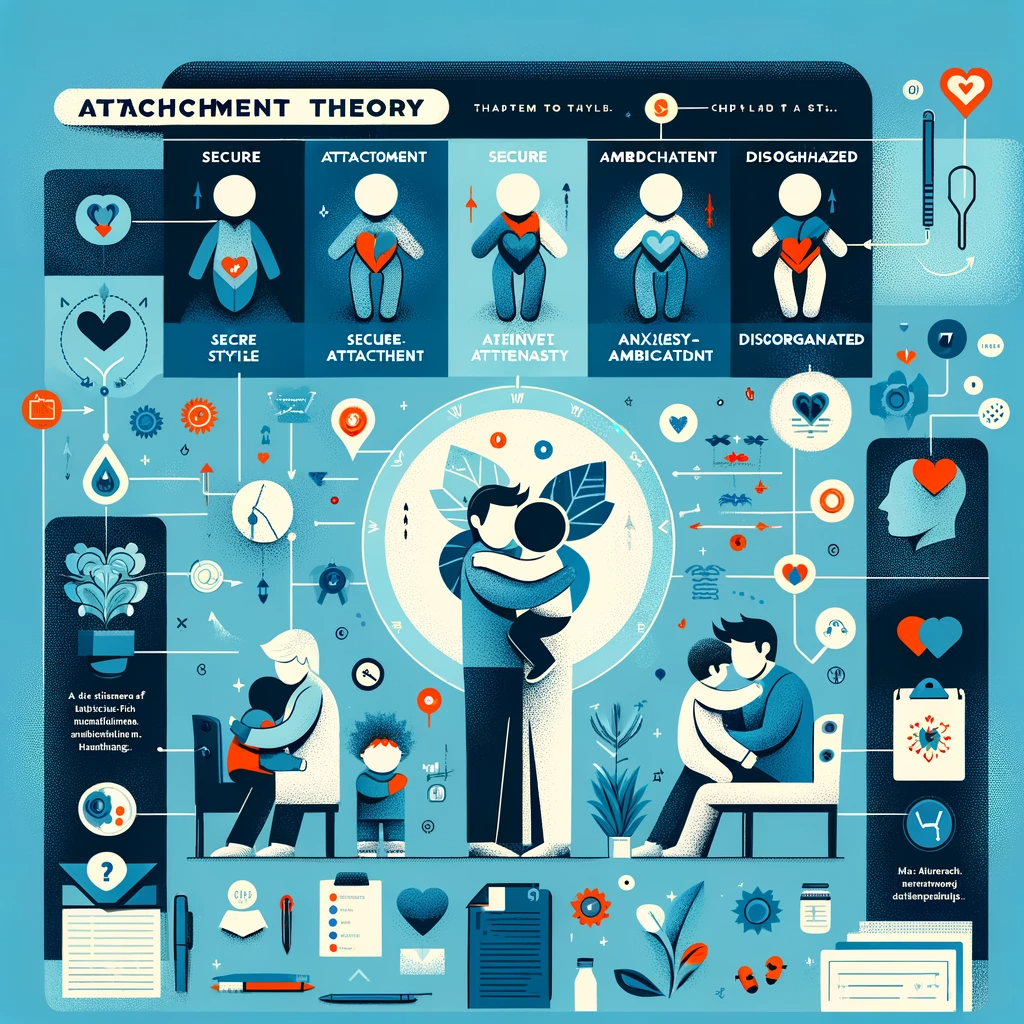Introduction to Attachment Theory
Attachment theory, a concept in developmental psychology, explains the dynamics of long-term relationships between humans. It was first developed by John Bowlby and later expanded by Mary Ainsworth, focusing on the bonds between children and their caregivers.
What is Attachment Theory?
Attachment theory suggests that children come into the world biologically pre-programmed to form attachments with others, as this will help them survive. The nature of these attachments, whether secure or insecure, can influence a person’s feelings, thoughts, and behavior throughout life.
Key Elements of Attachment Theory
- Secure Attachment: Typically developed when a caregiver is consistently responsive and supportive. Children with secure attachment feel safe and confident to explore the world.
- Insecure Attachment: There are three types:
- Avoidant Attachment: Develops when a caregiver is emotionally unavailable or unresponsive. The child learns to be self-sufficient.
- Anxious-Ambivalent Attachment: Arises from inconsistent caregiver responsiveness. The child becomes anxious and uncertain.
- Disorganized Attachment: Occurs when the caregiver is neglectful or abusive. The child experiences confusion and fear.
Bowlby’s and Ainsworth’s Contributions
- John Bowlby: Emphasized the importance of a secure base from which a child can explore the world.
- Mary Ainsworth: Developed the “Strange Situation” experiment, categorizing attachment into the types mentioned above.
Real-Life Examples
- A child with secure attachment might be upset when a parent leaves but quickly recovers upon their return.
- In contrast, a child with avoidant attachment may not react to a parent’s departure or return.
Modern Implications and Criticisms
While widely influential, attachment theory has been criticized for its western-centric viewpoint and for overlooking cultural variations in child-rearing practices.
Further Reading
- “Attachment” by John Bowlby
- “Becoming Attached: First Relationships and How They Shape Our Capacity to Love” by Robert Karen
Conclusion
Attachment theory remains a critical framework for understanding human relationships and their impact on psychological development.





Nice content, everything is clearly explained in simple words.
Thanks!